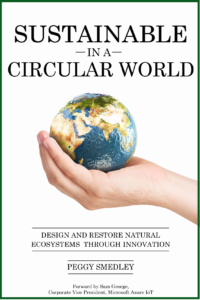With an objective to improve people’s lives, the planet, and enable economic growth, efficient power operation and energy optimization are primary objectives for IoT (Internet of Things) products intended for many vertical markets including utilities, manufacturing, automotive, healthcare, construction, transportation, infrastructure, and more. In fact, the IoT device market is expected to grow to more than 24 billion devices by 2025 in both consumer and enterprise applications.
A new whitepaper from MIPI Alliance, digs into this topic and identifies how product architects and designers can use a selected set of features to achieve these design goals. Let’s take a look.
The whitepaper, titled Achieving Power Efficiency in IoT Devices, details how MIPI has developed the 13C specifications with technical attributes intended to support the key design. Recognizing that limited energy usage and lower power are primary concerns, it aims to help developers reach goals.
The main purpose here is to standardize communication inside of embedded systems with a reconfigurable bus; to reduce the number of physical pins used; and to support low-power, high-speed data transfer, up to 33 Mbps.
More specifically, the I3C interface from MIPI Alliance is an evolutionary standard that improves upon the features of I2C, while maintaining backward compatibility. I3C offers a flexible multi-drop interface among the host processor, microcontroller, and peripherals to support modern architectures in embedded systems.
In I3C—though not in I3C Basic—the 33 Mbps limit can be further pushed up by using multiple-lane configurations: Dual Lane (x2 Lanes) and Quad Lane (x4 Lanes) operation are both possible, bringing a two-fold and four-fold increase in data rate, respectively, though with somewhat increased HW complexity.
Developing the MIPI I3C interface has been a communal effort to identify the real market needs, define a standard, and merge technology contributions from leading SoC, microcontrollers, sensor hub, and sensor vendors.
MIPI I3C was originally intended for mobile applications, conceived as a single interface that can be used for any sensor. But the I3C specifications have been successfully used for automotive, consumer, and other applications beyond smartphones.
The key takeaway here is that it offers a flexible, multi-drop interface to allow efficient communication among host processor, microcontrollers, and peripherals to support modern architectures in embedded systems.
What are your thoughts? What are your main objectives in IoT product design? What standards have been helpful for your organization?
Want to tweet about this article? Use hashtags #IoT #sustainability #AI #5G #cloud #edge #futureofwork #digitaltransformation #green #ecosystem #environmental #circularworld


